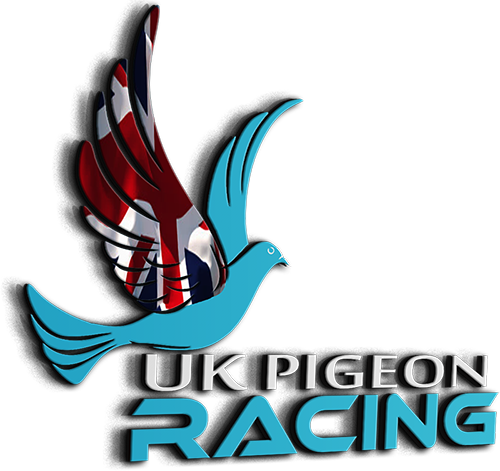ORDER YOUR HALF PRICE VACCINE TODAY!!!
https://www.meditechuk.com/collections/meditech
Meditech Offers
Here are some more
We have Four of our Top selling Products on Offer!!
ORDER TODAY AND SAVE ££££
http://www.meditechuk.com
https://www.meditechuk.com/products/ron ... 19ca&_ss=r
https://www.meditechuk.com/products/mox ... 1e32&_ss=r
https://www.meditechuk.com/products/one ... d802&_ss=r
https://www.meditechuk.co
We have Four of our Top selling Products on Offer!!
ORDER TODAY AND SAVE ££££
http://www.meditechuk.com
https://www.meditechuk.com/products/ron ... 19ca&_ss=r
https://www.meditechuk.com/products/mox ... 1e32&_ss=r
https://www.meditechuk.com/products/one ... d802&_ss=r
https://www.meditechuk.co
Sadies Lofts home of decent birds just a useless loft manager, and now a confirmed loser but proud 

Only had moxidectin from hyperdrug Trev
Never used it when feeding babies not that I know if you can or not
I see they sell the old tonic kits on there a lot use use that when I raced in a past life 30 odd years ago
Thanks Neil, a number of suppliers still sell those tonics.
Have used both and when breeding, to satisfy yourself Trev have a look at the instructions and make your own decision that is best
Sadies Lofts home of decent birds just a useless loft manager, and now a confirmed loser but proud 

Here you go Trev this may help
Foods, Materials, Technologies and Risks
Encyclopedia of Food Safety
Reference work2014, Encyclopedia of Food Safety
A. AnadónMR Martínez-Larrañaga
Explore book
Amprolium
Amprolium is structurally similar to vitamin B1. When it is administered orally to chickens, it has a low bioavailability, but the absorbed fraction is widely distributed into the tissues and rapidly eliminated in the urine and feces. Amprolium administered to laying hens is deposited primarily in the egg yolk, and residues can be detected in eggs for 10 days or more after cessation of treatment, depending on the dose and assay sensitivity.
No MRL has been established for this compound.
Chapter
Antiprotozoal Drugs
Greene's Infectious Diseases of the Dog and Cat (Fifth Edition)
Book2021, Greene's Infectious Diseases of the Dog and Cat (Fifth Edition)
Jane E. Sykes, Mark G. Papich
Explore book
Amprolium
Amprolium is a thiamine analogue that is used to prevent and treat intestinal coccidiosis (Table 12.1). It is available as a feed additive for livestock and is sometimes administered in food or drinking water to puppies and kittens. To administer to dogs and cats, it is available as a 9.6% (9.6 g/100 mL) oral solution or a soluble powder in a 22.6 g packet, which then must be mixed with food. For treatment of coccidiosis, 1.25 g of 20% amprolium powder can be added to food or 30 mL of 9.6% amprolium solution to 3.8 L of drinking water for 7 days.
Adverse effects of anorexia or diarrhea are rare and primarily occur at high doses and with prolonged use. Central nervous system (CNS) signs can result from thiamine deficiency, which is reversible on addition of thiamine to the diet. However, thiamine supplementation may interfere with the drug’s efficacy.
Foods, Materials, Technologies and Risks
Encyclopedia of Food Safety
Reference work2014, Encyclopedia of Food Safety
A. AnadónMR Martínez-Larrañaga
Explore book
Amprolium
Amprolium is structurally similar to vitamin B1. When it is administered orally to chickens, it has a low bioavailability, but the absorbed fraction is widely distributed into the tissues and rapidly eliminated in the urine and feces. Amprolium administered to laying hens is deposited primarily in the egg yolk, and residues can be detected in eggs for 10 days or more after cessation of treatment, depending on the dose and assay sensitivity.
No MRL has been established for this compound.
Chapter
Antiprotozoal Drugs
Greene's Infectious Diseases of the Dog and Cat (Fifth Edition)
Book2021, Greene's Infectious Diseases of the Dog and Cat (Fifth Edition)
Jane E. Sykes, Mark G. Papich
Explore book
Amprolium
Amprolium is a thiamine analogue that is used to prevent and treat intestinal coccidiosis (Table 12.1). It is available as a feed additive for livestock and is sometimes administered in food or drinking water to puppies and kittens. To administer to dogs and cats, it is available as a 9.6% (9.6 g/100 mL) oral solution or a soluble powder in a 22.6 g packet, which then must be mixed with food. For treatment of coccidiosis, 1.25 g of 20% amprolium powder can be added to food or 30 mL of 9.6% amprolium solution to 3.8 L of drinking water for 7 days.
Adverse effects of anorexia or diarrhea are rare and primarily occur at high doses and with prolonged use. Central nervous system (CNS) signs can result from thiamine deficiency, which is reversible on addition of thiamine to the diet. However, thiamine supplementation may interfere with the drug’s efficacy.
Sadies Lofts home of decent birds just a useless loft manager, and now a confirmed loser but proud 


